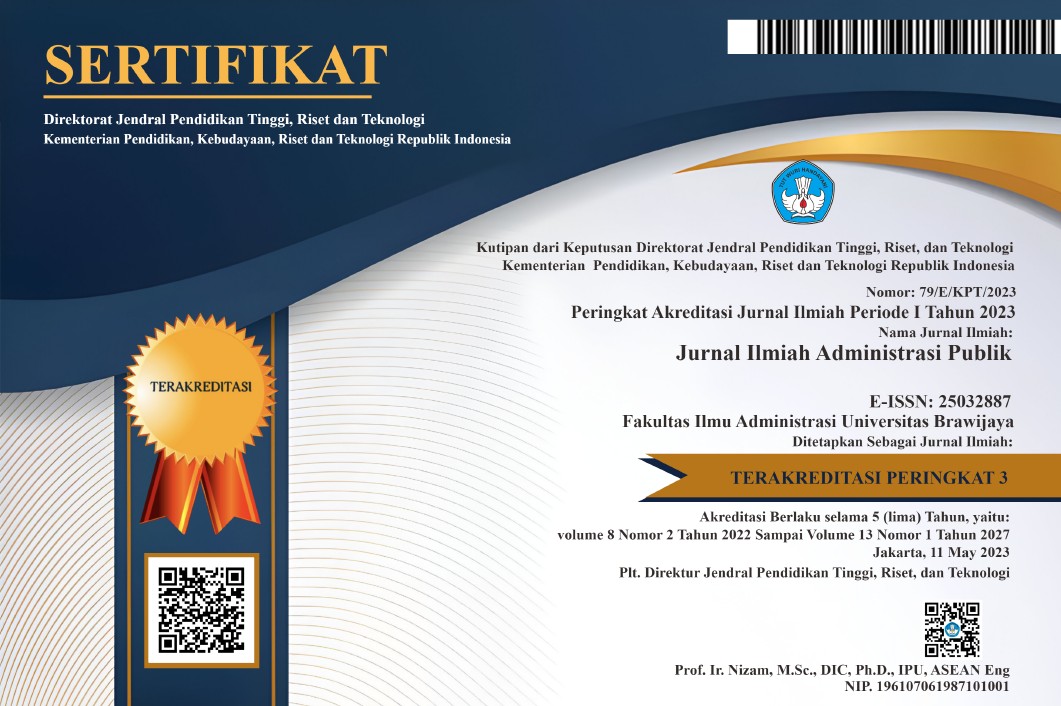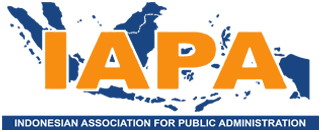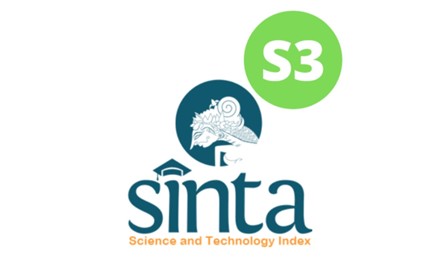Analisis Perencanaan Kinerja dalam Perspektif Balanced Scorecard (Studi Kasus: Badan Standardisasi Nasional)
DOI:
https://doi.org/10.21776/ub.jiap.2020.006.02.2Keywords:
implementation, policy, local electionAbstract
In the current era of openness, the performance results of government institutions in Indonesia are of high concern to the public. For this reason, Niven (2003) emphasizes that it is time to manage performance in government institutions that can always translate the vision into outcomes to improve performance results by using Balanced Scorecard (BSC). But the planning of the performance in the perspective of balanced scorecard in BSN is still inconsistent so that the performance results cannot be seen in an ongoing manner every year. This study aims to analyze performance planning in a BSC perspective at BSN based on the Nine to Steps Success Balanced Scorecard theory from Rohm (2003). In addition, this study also identifies the constraints and supporting factors that influence the planning. The result is known that the planning of the performance in BSC perspective at BSN does not go through the stages of strategic initiative and automatitation so that it affects the performance.References
Badan Pengawasan Keuangan dan Pembangunan (BPKP). (2000). Pengukuran Kinerja Suatu Tinjauan pada Instansi Pemerintah. Jakarta: BPKP.
Biro PKU BSN. (2019). Perubahan Indikator Kinerja Utama (IKU) dalam Perspektif Balanced Score in BSN. Jakarta: BSN.
Gaspersz, Vincent. (1997). Sistem Manajemen Kinerja Terintegrasi Balanced Scorecard dengan Six Sigma untuk Organisasi Bisnis dan Pemerintah. Jakarta: Gramedia Pustaka Utama.
Kaplan, Robert S., & Norton, David P. (2000). Balanced Scorecard: Menerapkan Strategi Menjadi Aksi. Diterjemahkan oleh Peter R. Yosi Pasla. Jakarta: Penerbit Erlangga .
Mahmudi. (2015). Manajemen Kinerja Sektor Publik (Edisi Ketiga). Yogyakarta: UPP STIM YKPN.
Miles, M.B., Huberman, A.M., & Saldana, J. (2014). Qualitative Data Analysis, A Methods Sourcebook, Edition 3. USA: Sage Publications.
Moeheriono. (2014). Perencanaan, Pengembangan dan Aplikasi Indikator Kinerja Utama (IKU) Bisnis dan Publik. Jakarta: Rajawali Press.
Niven, Paul. R. (2003). Balanced Scorecard Step-by Step: Maximizing Performance and Maintaining Results. New York: John Wiley & Sons, Inc.
Rohm, Howard. (2003). Improve Public Sector results With A Balanced Scorecard: Nine Steps To Succcess. North Carolina (NC): Balanced Scorecard Institute.
Srimindarti, Ceacilia. (2004). Balanced Scorecard sebagai Alternatif untuk Mengukur Kinerja. Fokus Ekonomi, 3(1), 52-64.
Suandy E. (2001). Perencanaan Perpajakan. Jakarta: Salemba Empat.
Uha, Nawawi Ismail. (2013). Budaya Organisasi Kepemimpinan dan Kinerja. Jakarta: Prenadamedia Group.
Wibowo. (2018). Manajemen Kinerja (Edisi Kelima). Jakarta: PT. Raja Grafindo Persada.
Published
Issue
Section
License
If your paper is accepted, the author identified as the formal corresponding author for the paper will receive an email prompting them to login into Author Services; where via the JIAP Author Licensing Service they will be able to complete the license agreement on behalf of all authors on the paper.














